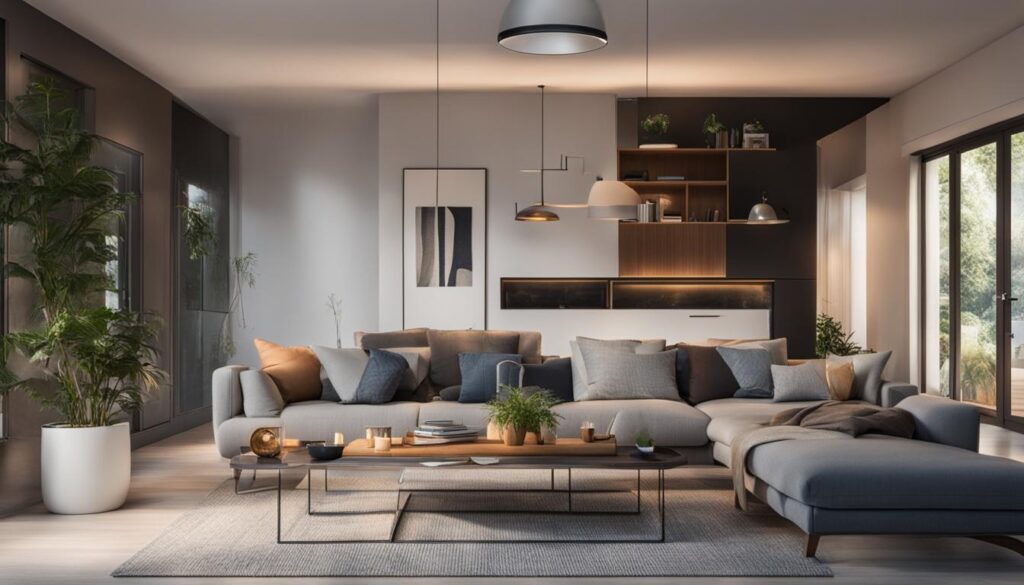As an expert in the English language and its nuances, I often encounter questions about the correct spelling and structure of various words. One common query that arises is whether “living room” should be written as one word or two. Today, I aim to shed light on this topic and provide a definitive answer.
The spelling of “living room” is indeed a matter of interest to many, as it falls into the category of compound nouns. However, it differs from other compound nouns such as “bathroom” and “bedroom.” Let’s explore further.
Table of Contents
Key Takeaways:
- “Living room” is a compound noun formed by combining a gerund and a noun.
- Unlike “bathroom” and “bedroom,” which are smooshed together without a space, “living room” typically has a space between the components.
- There is no strict rule governing whether a compound word should have a space or not.
- Gerund+noun combinations, like “living room,” usually have a space or hyphen between the components.
- The decision to use a space or hyphen should be guided by established conventions or style guides.
Compound Nouns and Spaces in “Bathroom” and “Bedroom”
The words “bathroom” and “bedroom” are examples of compound nouns in the English language. These terms are formed by combining two nouns, namely “bath” and “room” for “bathroom,” and “bed” and “room” for “bedroom.” What sets these compound nouns apart is the absence of a space between the two components.
Unlike other compound nouns where a space or hyphen is typically used to separate the words, “bathroom” and “bedroom” have the two nouns smooshed together. This configuration creates a unique structure for these terms and is a common feature of English compound words.
“Bathroom” and “bedroom” are compound nouns formed by combining two nouns without a space. This particular structure has become customary in the English language and is widely recognized and used.”
Compound nouns like “bathroom” and “bedroom” demonstrate the flexibility and diversity of the English language. They showcase how words can combine different parts of speech to form new meanings. In the case of “bathroom” and “bedroom,” the compound nouns represent specific areas or functions within a larger space, such as a house or apartment.
| Compound Noun | Structure |
|---|---|
| Bathroom | Noun + Noun |
| Bedroom | Noun + Noun |
As shown in the table above, both “bathroom” and “bedroom” follow the structure of noun + noun. This structure eliminates the need for a space or hyphen between the two nouns, resulting in compound nouns that have become standard in the English language.
Gerund+Noun Combinations in “Living Room”
In the English language, compound nouns can be formed in various ways. One common form of compound noun is the combination of a gerund and a noun. This is evident in the term “living room,” where the gerund “living” is followed by the noun “room” to create a compound noun.
The use of the gerund+noun combination in “living room” gives it a unique structure and sets it apart from other compound nouns like “bathroom” and “bedroom.” Unlike these two terms, which are formed by combining two nouns without a space, “living room” requires a space between the gerund and the noun.
The decision to have a space or not in a compound word is not strictly dictated by a rule. However, it is typical for gerund+noun combinations to be separated by a space or hyphen. This allows for clarity and ease of understanding, as it helps to distinguish between the gerund and the noun in the compound noun.
| Compound Noun | Formation |
|---|---|
| Bathroom | Combination of “bath” and “room” without a space |
| Bedroom | Combination of “bed” and “room” without a space |
| Living Room | Combination of the gerund “living” and “room” with a space |
Using the gerund+noun combination in compound nouns allows for the creation of unique and descriptive terms. The separation of the gerund and the noun by a space or hyphen helps to clarify the structure of the compound noun and aid in comprehension.
Conclusion
In conclusion, the term “living room” is a compound noun that follows a unique structure. Unlike “bathroom” and “bedroom,” which are formed by combining two nouns without a space, “living room” is formed using a gerund+noun combination. The use of the gerund, indicated by the -ing form in “living,” followed by the noun “room,” creates the compound noun “living room.”
While there is no strict rule for when a compound word should have a space or not, gerund+noun combinations often have a space or hyphen between the components. This is the case with “living room,” where the space between “living” and “room” indicates that it is a compound noun.
Understanding the structure of “living room” as a compound noun helps clarify its spelling and how it differs from “bathroom” and “bedroom.” The unique formation of “living room” sets it apart and emphasizes the importance of considering the gerund+noun combination when dealing with compound words in the English language.
FAQ
Is “living room” one word?
No, “living room” is not one word. It is a compound noun formed by combining a gerund and a noun, and it typically has a space between the components.
How is “living room” spelled?
“Living room” is spelled with a space between the words “living” and “room.”
Is “living room” hyphenated?
“Living room” is not typically hyphenated. It is usually written with a space between the words.
Are “bathroom” and “bedroom” also compound nouns?
Yes, “bathroom” and “bedroom” are also compound nouns. However, they are formed by combining two nouns without a space between them, unlike “living room.”
Why is “living room” different from “bathroom” and “bedroom”?
“Living room” is different because it is formed using a gerund+noun combination, while “bathroom” and “bedroom” are formed by combining two nouns. The use of the gerund in “living room” sets it apart and gives it a unique structure.


